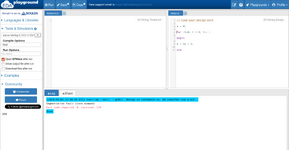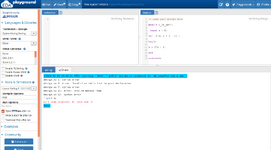keikaku
Newbie

I am brand new to Verilog. I am taking a course. If I am in the wrong place, please let me know.
I am trying to understand how to translate the following C code into Verilog. I just do not get how. Any help is appreciated.
x = 0;
for (i=0; i < 3; i++ ){
x = 2x + 1;
}
Any explanation of how to this can be done ? I suppose this is simple code, but Verilog seems difficult.
I am trying to understand how to translate the following C code into Verilog. I just do not get how. Any help is appreciated.
x = 0;
for (i=0; i < 3; i++ ){
x = 2x + 1;
}
Any explanation of how to this can be done ? I suppose this is simple code, but Verilog seems difficult.




